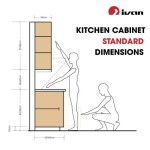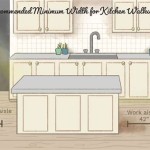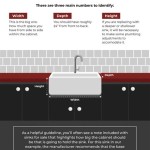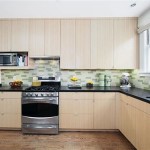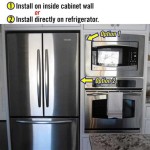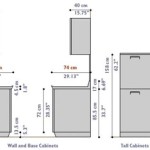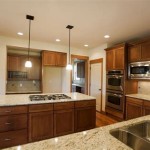Kitchen Cabinet Door Locks: Ensuring Safety and Security
Kitchen cabinet door locks are devices designed to secure cabinet doors, primarily in kitchens but also applicable in other areas of the home, such as bathrooms, pantries, or utility rooms. The fundamental purpose of these locks is to prevent unauthorized access to the contents of the cabinets. This unauthorized access can pose a risk to children, pets, or vulnerable adults who might ingest harmful substances or access potentially dangerous objects stored within. Furthermore, cabinet locks can serve as a deterrent against theft or tampering, especially in environments with transient individuals like rental properties or shared living spaces.
The need for kitchen cabinet door locks stems from a variety of concerns. Homes with young children require protective measures to prevent accidental ingestion of cleaning supplies, medications, and other hazardous materials commonly stored in kitchen cabinets. Similarly, pet owners often employ these locks to safeguard their animals from accessing potentially toxic foods or substances. In scenarios where valuable or sensitive items are stored in kitchen cabinets, such as expensive cookware, alcohol, or personal documents, cabinet locks can provide an added layer of security and peace of mind. Beyond the immediate household, facilities such as daycare centers, assisted living facilities, and group homes often utilize cabinet locks as a standard safety protocol to protect vulnerable individuals under their care.
The selection of appropriate kitchen cabinet door locks involves considering several factors, including the type of cabinet, the intended purpose of the lock, the ease of installation, and the level of security required. A wide range of options are available in the market, each with its own advantages and disadvantages. Understanding the different types of locks and their specific applications is crucial for making an informed decision that effectively addresses the specific needs of the household or facility.
Types of Kitchen Cabinet Door Locks
Several distinct types of kitchen cabinet door locks cater to diverse needs and cabinet configurations. Each type offers a different approach to securing cabinet doors, with varying levels of security, ease of installation, and aesthetic impact. Understanding the nuances of each type is crucial for selecting the most appropriate option.
Magnetic Locks: These locks utilize a magnetic mechanism to keep cabinet doors securely closed. The system consists of two main components: a lock unit that is installed inside the cabinet and a corresponding magnetic key. The lock unit engages when the door is closed, and it can only be opened with the magnetic key. Magnetic locks are generally considered child-resistant due to the need for the specific key, which can be kept out of reach of children. Installation typically involves using adhesive or screws to mount the lock unit inside the cabinet and the corresponding strike plate on the inside of the door. A key advantage of magnetic locks is their discreet appearance, as the locking mechanism is hidden from view. However, the effectiveness of magnetic locks can be affected by the strength of the magnet and the thickness of the cabinet door.
Adhesive Locks: Adhesive locks rely on strong adhesive to secure cabinet doors. These locks typically consist of two parts: one that attaches to the cabinet frame and another that attaches to the cabinet door. The two parts interlock when the door is closed, preventing it from being opened. Adhesive locks are popular for their ease of installation, as they do not require drilling or screws. They are often used in rental properties where permanent modifications are not permitted. However, the strength of the adhesive is a critical factor. Over time, the adhesive may weaken, especially in humid environments or with repeated use. It's essential to choose adhesive locks with high-quality adhesive and to regularly check their adhesion to ensure they remain effective. Removal of adhesive locks can sometimes be challenging and may leave residue behind, potentially damaging the cabinet finish.
Latch Locks: Latch locks are a more traditional type of cabinet lock that uses a latch mechanism to secure the door. These locks typically involve installing a latch on the inside of the cabinet door that engages with a strike plate mounted on the cabinet frame. Latch locks can be simple spring-loaded latches or more complex mechanisms with a key or combination. Latch locks are generally more visible than magnetic locks, as the latch and strike plate are typically mounted on the exterior of the cabinet. They offer a more robust locking mechanism compared to adhesive locks, providing a higher level of security. However, installation requires drilling holes in the cabinet door and frame, which may not be desirable for all users. Latch locks with keys provide an additional level of security, but it's crucial to keep the keys in a safe and accessible location.
Spring-Loaded Cabinet Latches: These are simple devices that utilize a spring-loaded mechanism to keep the cabinet door closed. They are installed on the inside of the cabinet frame and the edge of the door. When the door is closed, the spring-loaded latch engages, preventing the door from being opened without applying significant force. These latches are relatively inexpensive and easy to install, requiring only a few screws. However, they may not be the most secure option, as a determined individual could potentially force the door open. They are best suited for situations where preventing accidental opening is the primary concern, rather than providing a high level of security.
U-Shaped Locks: This type of lock consists of a U-shaped bracket that fits over the cabinet knobs or handles. The bracket prevents the knobs or handles from being turned, effectively locking the cabinet door. U-shaped locks are easy to install and remove, making them a convenient option for temporary security needs. They are particularly useful for securing cabinets with standard knobs or handles. However, they are not suitable for cabinets with recessed pulls or other unconventional hardware. The level of security provided by U-shaped locks is relatively low, as they can be easily removed by someone with sufficient force or the right tools. They are primarily intended to deter casual access rather than provide robust security.
Installation Considerations
Proper installation is crucial for the effectiveness of any kitchen cabinet door lock. Regardless of the type of lock chosen, following the manufacturer's instructions carefully is essential. Failure to do so can result in a compromised locking mechanism or damage to the cabinet. Before beginning the installation process, gather all necessary tools and materials, including screwdrivers, drills, measuring tapes, and adhesive pads. Thoroughly clean the surfaces where the lock components will be attached to ensure proper adhesion or secure screw placement.
Surface Preparation: Surface preparation is a critical step, especially when using adhesive locks. The surfaces of the cabinet door and frame should be clean, dry, and free from grease, dust, or any other contaminants. Use a mild detergent and water to clean the surfaces, then dry them thoroughly with a clean cloth. Avoid using harsh chemicals or abrasive cleaners, as these can damage the cabinet finish. For optimal adhesion, consider lightly sanding the surfaces with fine-grit sandpaper before applying the adhesive pads. This will create a slightly rough surface that allows the adhesive to grip more effectively.
Precise Placement: Accurate placement of the lock components is essential for the lock to function correctly. Use a measuring tape and pencil to mark the precise locations where the lock components will be attached. Double-check the alignment to ensure that the lock engages properly when the door is closed. For magnetic locks, ensure that the magnetic key aligns correctly with the lock unit. For latch locks, ensure that the latch engages securely with the strike plate. Incorrect placement can result in the lock not functioning properly, requiring adjustments or reinstallation.
Drilling and Screwing: When installing latch locks or other types of locks that require drilling, use a drill with the appropriate size drill bit. Drill pilot holes before inserting screws to prevent splitting the wood. Use screws that are the correct length for the thickness of the cabinet door and frame. Over-tightening screws can strip the threads or damage the cabinet, while under-tightening screws can result in a loose and unstable lock. Take your time and work carefully to avoid making mistakes that could compromise the integrity of the cabinet.
Adhesive Application: When using adhesive locks, apply the adhesive pads to the designated areas on the lock components. Ensure that the adhesive pads are securely attached to the lock components before attaching them to the cabinet. Apply firm pressure to the lock components for several seconds to ensure a strong bond. Allow the adhesive to cure for the recommended time period before testing the lock. Avoid applying excessive force to the lock during the curing process, as this can weaken the adhesive bond. Regularly check the adhesion of adhesive locks and replace the adhesive pads if they start to lose their grip.
Testing and Adjustment: After installation, thoroughly test the lock to ensure that it functions correctly. Open and close the cabinet door several times to verify that the lock engages and disengages smoothly. If the lock is not functioning properly, make any necessary adjustments. For example, you may need to reposition the strike plate or tighten the screws. If you are unable to resolve the issue yourself, consult the manufacturer's instructions or seek professional assistance.
Factors to Consider When Choosing Locks
Selecting the most appropriate kitchen cabinet door locks requires careful consideration of several factors. These factors include the specific needs of the household, the type of cabinets, the desired level of security, and the ease of use. A thorough evaluation of these factors will help ensure that the chosen locks effectively address the intended purpose and provide lasting protection.
Safety Needs: The primary reason for installing kitchen cabinet door locks is often to protect children, pets, or vulnerable adults from accessing potentially dangerous items. When selecting locks, consider the specific hazards present in the kitchen cabinets. If the primary concern is preventing access to cleaning supplies or medications, a lock with a higher level of security may be necessary. If the concern is preventing accidental access to food items, a less robust lock may suffice. Consider the age and developmental stage of children when choosing locks. A lock that is effective for a toddler may not be effective for an older child who is more resourceful and determined.
Cabinet Type and Construction: The type of cabinets and their construction play a significant role in determining the suitability of different types of locks. Some locks are designed for specific types of cabinets, such as those with framed doors or frameless doors. The material of the cabinets also matters. Locks that require drilling may not be suitable for cabinets made of particleboard or other fragile materials. Consider the thickness of the cabinet doors and frames when choosing locks. Some locks may not be compatible with very thin or very thick doors. Before purchasing locks, carefully assess the type and construction of your cabinets to ensure compatibility.
Level of Security: The desired level of security is another important factor to consider. For situations where preventing unauthorized access is critical, such as in homes with valuable or sensitive items, a lock with a higher level of security is necessary. Latch locks with keys or combination locks offer a greater level of security than adhesive locks or spring-loaded latches. Consider the potential consequences of unauthorized access when determining the appropriate level of security. If the consequences are severe, invest in locks that provide robust protection.
Ease of Use: While security is paramount, ease of use is also an important consideration. The locks should be easy to operate for authorized users, but difficult for unauthorized users to bypass. Consider the needs of all members of the household when evaluating ease of use. Locks that are too complicated to operate may be frustrating to use, leading to them being left unlocked. Choose locks that strike a balance between security and convenience.
Aesthetics: The appearance of the locks is another factor to consider. Some locks are more discreet than others. Magnetic locks, for example, are hidden from view, while latch locks are typically visible. Consider the overall aesthetic of your kitchen when choosing locks. If you prefer a clean and minimalist look, opt for locks that are less conspicuous. If aesthetics are less of a concern, prioritize security and functionality.
Durability and Longevity: Choose locks that are made from durable materials and are designed to withstand regular use. Locks that are made from high-quality materials will last longer and provide more reliable security. Consider the environment in which the locks will be used. If the kitchen is humid or prone to moisture, choose locks that are resistant to corrosion. Read reviews and research the reputation of different brands to ensure that you are purchasing locks that are built to last.

Kitchens Cabinet Locks Kitchen Cabinets Fixtures

How Do I Fit A Furniture Lock To Cabinet Furnica

Heldig Magnetic Cabinet Door Catch With Magnets For Latch Closer Kitchen Closet Closing Closerb Com

Christine Higgs Home Decor On Instagram Cabinet Hardware Is Everything We Love How Our Nostalgicwarehouse Latches And Cup Pulls Look In The New Kitch Kitchen

12 Pcs Cabinet Catches Double Roller Door Latches Zinc Plated Catch Closers For Kitchen Cupboard And Drawer Fruugo No

Cabinet Magnetic Door Catch Ultra Thin Closer Lock Strong For Kitchen Wardrobe Closet Drawer Vintage Red 4 Pack Com

Rev A Shelf Tot Lok Latch Door Lock Richelieu Hardware

How Do Push To Open Latches Work Furnica

3 Digit Combination Lock For Cabinet Doors Twist Knob Hasp Latch With Password Code Zinc Alloy Door Kitchen Drawers Cabinets Temu Es

Genuinemarine Zinc Alloy Half Moon Handle Push Lock Latch Knob Caravan Thalassa Marine
Related Posts

